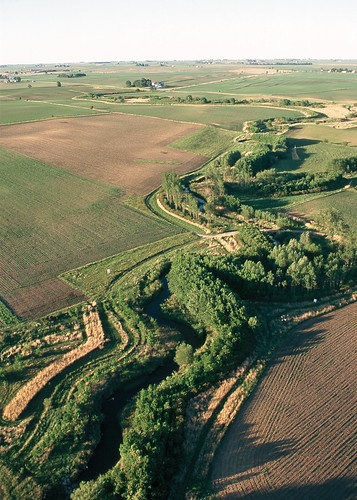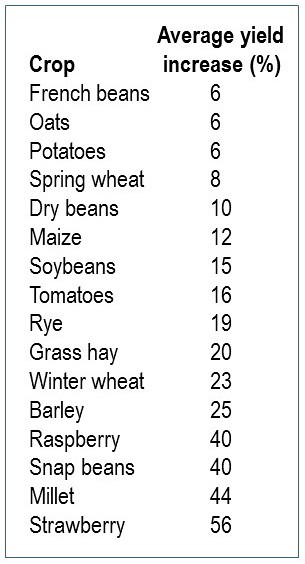
When Holly and Barry Mawby arrived on their farm in Esmond, North Dakota in 2011, they discovered windbreaks that had not been cared for in decades. They quickly realized that they were in jeopardy of losing what little protection they had from the brutal winds.
Farmers are challenged by ever-increasing production demands under the uncertainties of changing weather conditions, climates, and markets. Agroforestry, the intentional integration of trees and shrubs into crop and livestock production systems, can enhance not only the resiliency, but also the productivity and profitability of agricultural operations and lands.
The US Forest Service has published a new report: Agroforestry: Enhancing Resiliency in U.S. Agricultural Landscapes Under Changing Conditions that presents the first-ever synthesis on agroforestry as a mechanism for improving the resiliency of farm lands. Drawing upon the most current science, the report shows how tree-based management strategies can improve agricultural production and resiliency, especially under changing environmental conditions.
Agroforestry is not a new idea; it has played a prominent role in the history of large-scale U.S. agricultural landscape management. In the 1930s, the Prairie States Forestry Program planted over 18,600 miles of windbreaks in the Great Plains to minimize soil erosion during the Dust Bowl period.

Practices like windbreaks and alley cropping, in which trees or shrubs are grown around or among crops, can reduce wind velocity, decrease erosion, and improve soil health. Silvopasture, the sustainable production of livestock, trees, and cattle on the same unit of land, allows trees to be managed for timber or other tree crops while providing shade and shelter for livestock.
Riparian buffers – vegetated areas along streams and other water bodies – stabilize banks, reduce nutrient runoff, and provide shade that helps keep rising stream temperatures in check. Forest farming, or the cultivation of high-value crops like ginseng or shitake mushrooms under a forest canopy, is another agroforestry tool used to diversify farm portfolios and provide economic stability for landowners.

According to the report, well-maintained windbreaks can increase crop yields as much as 56 percent by increasing per-land-unit area productivity.
The Mawbys have repaired their windbreak, replacing many of the damaged trees and adding lower-growing currant, dogwood, and evergreens to protect their sensitive culinary herb crops against the relentless winds. The windbreak has also proven to be a fertile source of diversification by creating a microclimate that provides shade and adds moisture to the air, forming just the right conditions for mushrooms.

“Now we get bags and bags full of wine cap mushrooms from this bed each year,” Holly said.
They have since added shitake and black morel mushrooms to their suite of farm products.
Farmers like the Mawbys demonstrate how agroforestry advances USDA’s strategic goals of facilitating rural prosperity and economic development. Not only do these practices bolster agriculture sustainability and landscape health, but they also help farmers hedge their bets against future challenges.


